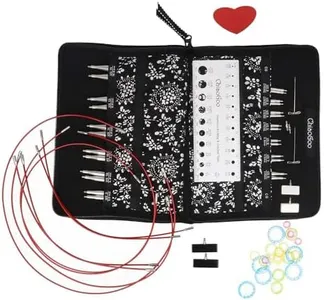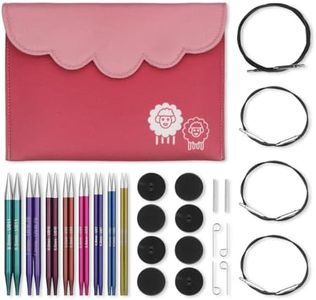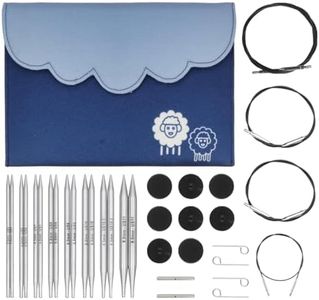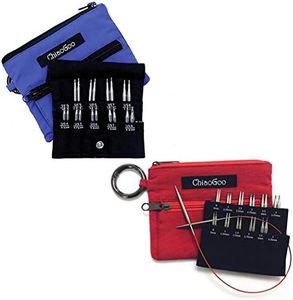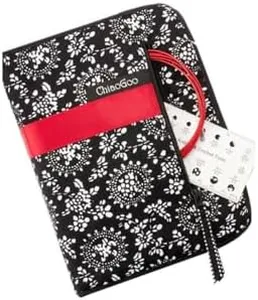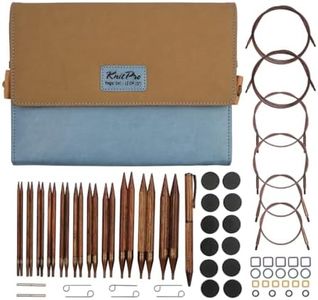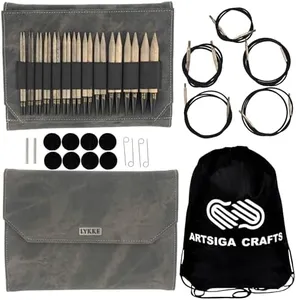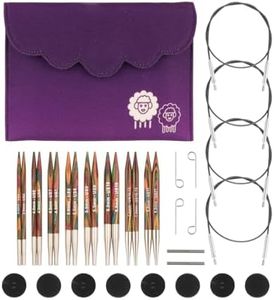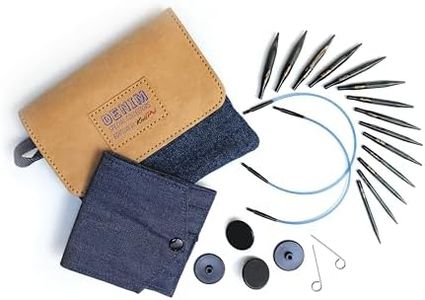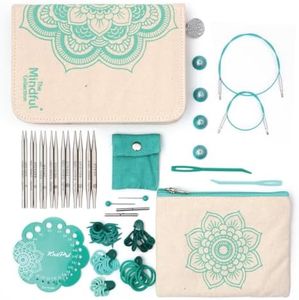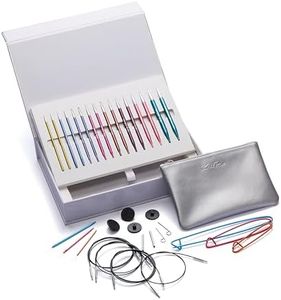We Use CookiesWe use cookies to enhance the security, performance,
functionality and for analytical and promotional activities. By continuing to browse this site you
are agreeing to our privacy policy
10 Best Interchangeable Knitting Needles
From leading brands and best sellers available on the web.Buying Guide for the Best Interchangeable Knitting Needles
When choosing interchangeable knitting needles, it’s important to look beyond just what looks appealing or what’s on sale—you’ll want to find a set that suits your knitting style, the types of projects you like to do, and that feels comfortable in your hands. Interchangeable kits allow you to switch out needle tips and cables to create different lengths and sizes, giving you lots of flexibility without needing to buy a new pair every time. Before committing, think about what you most often knit (like hats, blankets, or sweaters), your preferred needle material, and how comfortable you are with changing needle tips.Needle MaterialThis spec refers to what the needle tips are made from—commonly wood, metal, or plastic. The material affects your knitting speed and comfort. Wood tends to be warm and grippy (good for slippery yarns and beginners), metal is slick and fast (ideal for fast knitters and tight stitches), while plastic is lightweight and affordable but sometimes less durable. If you often knit loosely or with slippery yarns, wood can help you keep control. If you prefer speed or work with sticky yarns, metal might be better. Many knitters find one material feels better in their hands, so if possible, try to touch and test before you buy.
Needle Size RangeThis tells you the range of needle sizes that come in the kit, usually measured in US or millimeters. The wider the range, the more flexible the kit is for different projects: smaller sizes are used for socks and lacework, middle sizes for general items like scarves and sweaters, large sizes for chunky yarn. Before you buy, consider what you like to knit most; if you rarely knit with bulky yarn, you might prioritize a set with more sizes in the middle or lower range.
Cable Compatibility and LengthThis is about the lengths and types of cables included, as well as whether you can buy extras separately. Cable length determines the total circular length of your needle, which you need to adjust based on your projects—a hat needs a shorter cable, while a blanket needs a longer one. Some sets come with fixed cable lengths or a wide variety, and others let you buy more or different cables later. Think about what you knit most (hats, socks, sweaters, or big blankets) and make sure the kit’s cables suit those needs.
Join SmoothnessThe join is where the tip connects to the cable. A smooth join helps your yarn glide over the connection without snagging, which is important for a pleasant knitting experience, especially with splitting or delicate yarns. Try to pick needles known for smooth joins—look for signs of gaps or roughness if you can inspect them in person. If you are a beginner or use lots of fuzzy or delicate yarn, this spec is particularly important.
Connection MechanismThis refers to how the needle tips attach to the cables—most commonly, it’s either a screw-on or snap-lock system. A secure connection means your needles won’t come undone during use. Screw connections often need a little tightening tool, while snap-locks are faster but might wear out over time. If you expect to change needle sizes or cables frequently, you might want to consider how quick and strong the connection feels to you.
Portability and Case QualityInterchangeable needle sets usually come with a case or pouch for storage. A well-organized and sturdy case helps you keep all your tips, cables, and connectors in one place. Some are compact for travel, others are designed for easy organization at home. If you knit on the go, look for a set where the case is tidy and portable; if you mostly knit at home, a larger, more open case might suit you better.
